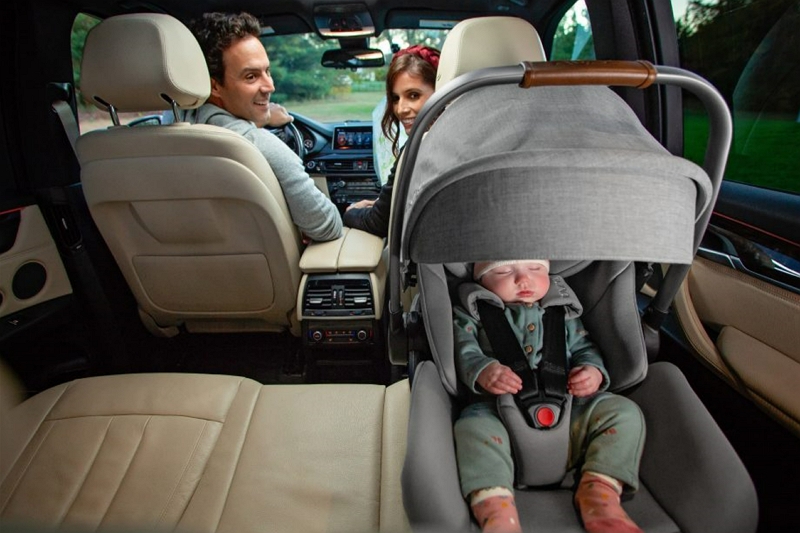How long should a baby be in a car seat when driving? Most car seats are designed to have children sit rear-facing for the first two years of their lives.
Then they should transition into forward-facing car seats until at least four or five years old. It is recommended that you keep your child in a booster seat up through age 12 as long as they fit the height and weight requirements for this type of safety restraint system.

What age can a child ride in a convertible?
Convertibles are often used as family cars, and when they’re not transporting kids to soccer practice or school in the morning, parents like using convertibles for weekend trips.
Although laws vary from state to state (and sometimes even city to city), convertible car seats can usually be installed once a child reaches 40 lbs., which is typically around age four.
Once your child has outgrown his rear-facing infant seat (typically after one year of use), he can graduate up to a convertible car seat with an internal harness system that fastens at the lap and shoulder level—the best kind you’ll find on the market today!
Convertible car seats also have improved safety features such as steel bars under their plastic shells for added strength and side-impact protection. They also have a handle on top so they can be carried from car to home when you’re making the switch from one mode of transportation to another.
Does my 3-year-old need a 5 point harness?
Currently, the AAP recommends that children under age two ride in rear-facing car seats. A five-point harness can keep your little one safe if you do not have a back seat or only plan on travelling with them for short distances.
Once they outgrow their baby carrier, many parents choose to purchase convertible car seats so they can use them forward-facing as well.
When using this type of seat, there is an additional tether strap between the top and bottom parts of the child’s belt assembly. It should be snug across the shoulders but allow some movement at the waist since more than 90% of head injuries happen when babies are leaned over too far during impacts (NHTSA).
This means that even bigger kids may need a booster seat at some point until they have reached the correct height and weight requirements for a traditional adult safety belt.
Can my 4-year-old use a backless booster seat?
The short answer is yes, your child can use a backless booster seat if they are 40lbs or more. Most car seats nowadays come with the option of using them as either rear-facing (until at least age two) or front-facing (up to 65 lbs). Once children outgrow this stage, most parents look for boosters that might be suitable until they’re ready for regular adult belts.
Backless boosters provide an easy way to meet these requirements and also allow your kids to sit safely in the backseat without having to worry about tripping over their headrests like some high-back/shoulder harnessed types do.
It is important however not to put too much pressure on what you think should happen because every parent has different thoughts about what is best for their child.
What car seat should a 3-year-old use?
A child from the age of one to three should use a rear-facing seat. Many parents make a mistake and turn their children around too early, but this is actually very dangerous.
A five-point harness protects your child during even severe accidents while still providing them with comfort while they are riding in the car.
What is a convertible car seat?
A convertible car seat is a safety device that can be used in both rear-facing and forward-facing positions. A good quality, high weight limit model will allow the use of this type of infant seating for much longer than other models on the market because it provides more flexibility in growth options.
Instead of having to purchase multiple seats before your child reaches maturity, one or two $100-$300 units should do fine if you find the right brand/style.
Furthermore, they are usually easier to install than standard models so parents can keep their sanity while driving around with kids too young to sit still!
Here at krostrade, we’ve compiled an extensive report that covers everything from features available today all the way down to specific recommendations based on weight/height to help you make the right choice for your child.
How do you tell when your baby has outgrown the infant car seat?
When your baby outgrows his or her infant car seat, you have two options: continue using the same infant car seat with a bigger baby carrier insert for extra support and comfort.
Or purchase an entirely new one like this Graco Car Seat that adapts as your child grows. This way, you won’t waste any of the money already spent on the original item!
You’ll also save time since you can skip having to research all previous models before making your final decision. However, if purchasing another model seems more feasible, be sure not to miss our article comparing some popular brands of convertible car seats here .
We’ve found what we believe are great deals on top-rated items below too! Want to know how long it will take to install your car seat? This article is a good place to start.
